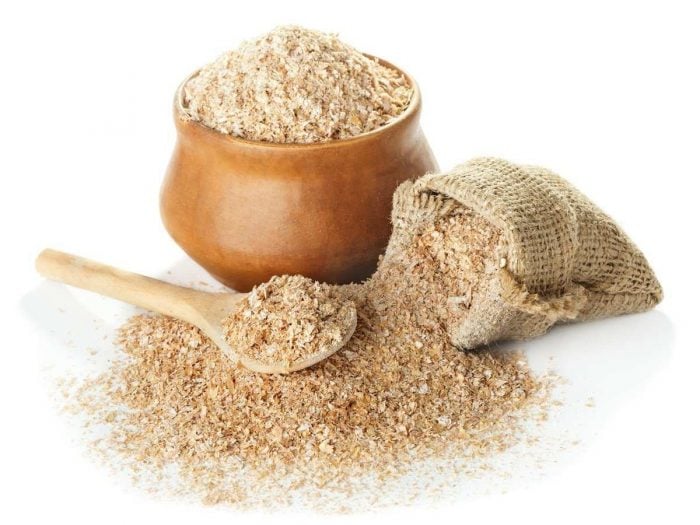7 great Health Benefits of Oat Bran
Oat bran husks are packed with fiber and nutrients and are becoming a popular health food staple.
What is Oat Bran?
Oat bran is made from the outer husks of oat grain cereal (Avena Sativa), which is primarily grown in Europe and America. Usually sold in a meal-like consistency, oat bran is high in soluble fiber and rich in a range of vitamins, antioxidants, and minerals. This type of branwas once reserved for feeding cattle and livestock, but in recent years, the nutritional value of this part of the grain has lifted it into popularity for healthy eaters. Oat bran contains more magnesium, potassium, phosphorus, protein, and fiber, as well as fewer fats per 100 grams, than whole or rolled oats. An article by JW Anderson, published by the American Journal of Clinical Nutrition, argues that oat-derived bran and other concentrated forms of dietary fiber can be beneficial for dozens of different health conditions, including various forms of cancer and heart disease.

Nutritional Value of Oat Bran
Every 100 grams of oat bran contains approximately 246 calories. The total percentage of carbohydrates is 22 percent, proteins make up 34 percent, fiber 62 percent, and fats compose 11 percent. It alsocontains a range of vitamins and minerals:
Vitamins
Betaine – 19.6 mgCholine – 32.2 mgFolate – 52.00 mcgNiacin – 0.934 mgPantothenic acid – 1.494 mgRiboflavin – 0.220 mgThiamin – 1.170 mgVitamin B6 – 0.165 mgVitamin E – 1.01 mgVitamin K – 3.2 mcg
Minerals
Calcium – 58.00 mgCopper – 0.403 mgIron – 5.41 mgMagnesium – 235.00 mgManganese – 5.630 mgPhosphorus – 734.00 mgPotassium – 566.00 mgSelenium – 45.2 mcgZinc – 3.11 mg
Health Benefits of Oat Bran
Oat bran has many amazing benefits including the lowering of cholesterol levels, defending against diabetes, promoting weight loss, and improving neurological health among others. Let us take a detailed look at them below.
Defends Against Diabetes
Those diagnosed with type-2 diabetes have difficulty regulating their blood sugar levels. The beta-glucan soluble fiber present in oat bran helps the body better control blood sugar, slowing the absorption of sugar into the bloodstream and improving sensitivity to insulin. According to a study by Dr. N. Tapola published in Nutrition, Metabolism and Cardiovascular Disease journal, regular consumption of oat bran helped to reduce the post-prandial glucose response by the body, unlike many other forms of cereal, such as wheat flour.
Prevents Heart Disease
The key soluble fiber in this type of cereal bran is beta-glucan. This fiber binds with cholesterol-containing bile and removes it from the body. High levels of cholesterol are directly linked with heart disease. By helping avoid the build-up of plaque in the arteries, oat bran does a great deal to keep blood pressure regulated and the cardiovascular system healthy. Several studies have demonstrated that oat bran is effective in helping to lower our overall cholesterol levels.
Aids Weight Loss
A high-fiber diet is recommended for weight loss, as it absorbs water and creates a feeling of fullness, which successfully postpones hunger. Overall, this means that you consume fewer calories. Bran is an excellent source of fiber. In a study published in the Journal ofNutrition, conducted by Dr. Joanne Slavin, the addition of fiber to weight-loss diet was a clear complement to the successful reduction in body weight.
Prevents Constipation
Fiber is an ally to the digestive system, as it helps to promote the regular and healthy consistency of stool. Be sure to drink plenty of water to help the body process the fiber appropriately.
Aids Neurological Health
Oat bran is also a very good source of protein. In addition to giving the body strength and energy, protein is broken down into amino acids, some of which play a vital role in the healthy functioning of the brain and thyroid.
Aids Skin Care
Oats are often used in skin care products due to their high mineral content and soothing properties. When applied topically, oat bran can be used holistically in the face or body scrubs and may help ease the symptoms of eczema, dry skin, and rashes.
Good Gluten-Free Option
Studies have shown that most celiac patients are able to digest oats, making it a good alternative protein and carbohydrate source. That being said, a review published in theWorld Journal of Gastroenterology by Dr. Isabel Comino et al., suggests that the type of oats used by celiac patients will determine whether they can safely consume the bran. In other words, not all oats are created equal.
How to Include Oat Bran in your Daily Diet?
Oat bran is easily incorporated into your daily diet as a breakfast cereal. You can make hot porridge or leave the oats to soak in water overnight to make a healthy, cold version of porridge. Some people also sprinkle ground oat bran onto stews, soups, or other kinds of breakfast cereal. Alternatively, use oat bran to make granola and granola bars, pancakes, cookies, bran muffins or bread. You can experiment with using powdered oat bran as a healthy substitute for flour. You may even like to make your own face mask or body scrubs at home using soaked oat bran as a base ingredient; try combining it with honey, yogurt, and a little oil.
Side Effects
Eating oat bran in large amounts can cause gas and bloat. Monitor your intake to avoid these gastrointestinal symptoms. Using oat-related skin products may cause a breakout reaction in a small minority of people. Avoid eating oat bran if you have any pre-existing digestive issues relating to the stomach, intestines or esophagus. There is a risk of oats blocking the intestines if the digestive process is significantly slowed down. Before making any major changes to your diet, it is best to speak with your doctor or a nutritionist.
Comments
Post a Comment